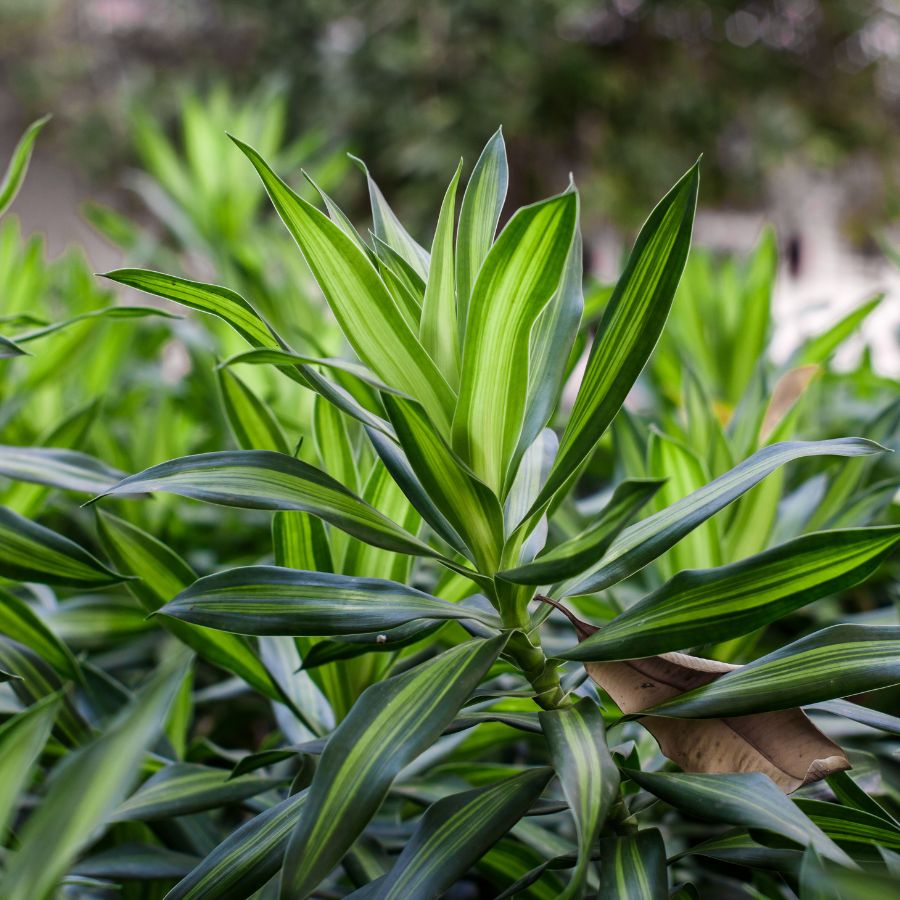Dracaena
Dracaena are plants that have spear- or grass-shaped leaves that grow from one or more thick, fleshy, cane-like main stems.
Growth: -2-10 feet in height 1-2 feet wide, depending on the variety. Dracaena are appreciated for their foliage, which is often variegated.
These plants are low-maintenance and easy to care for. They can survive in lower light settings, but are happiest in bright, indirect sunlight.
Light:
Dracaena plants do best in bright, filtered, or indirect light.
Soil:
Dracaena plants do well in any peat-based potting mix, which has the slight acidity that these plants prefer.
Water:
These plants should be kept consistently moist during their growing season (spring through fall), but allowed to go drier in the dormant winter period. Water them thoroughly during the active growing season, allowing excess water to drain through the pot into a tray or basin beneath. In winter, water more moderately.
Fertilizer:
Dracaena plants do well with a monthly feeding with a water-soluble fertilizer during spring and summer. Feeding should be held back in fall and winter when plant growth slows down.
Pruning:
Although pruning is not essential, dracaena plants tolerate cutting back when necessary to control their shape or height. Pruning is best done during the active growing periods of spring and summer. Yellowing or dead leaves should be removed as they appear.
Potting and Repotting Dracaena
Dracaena plants will do well in any peat-based potting mix in a large pot with good drainage. Yearly, replace the top 2 to 3 inches of potting mix with fresh mix to replenish nutrients.
Repot into a slightly larger container when the plant starts to lift up or when roots start to emerge through the drainage holes.
Common Pests & Plant Diseases
Dracaena is susceptible to some of the same pests that affect many houseplants, especially thrips and mealy bugs. Fungal leaf spot disease can sometimes be a problem if the soil is overly moist.
Potential Problems With Dracaena
Dracaena species are sensitive to fluorides and built-up salts, which can cause browning of the leaves. If you notice this, try watering with non-fluoridated water, with an especially deep watering once each month to flush out salts. Browning leaves can also occur if indoor humidity levels are too low; mist the plant regularly or use a room humidifier to resolve this.
Too much direct sunlight can scorch leaves, and too little light can cause the leaves to become very narrow.
*Toxic to humans and pets if ingested.*
Common Varieties:
- Dragon Tree
- Dracaena marginata
- Cintho
- Dorado
- Janet Craig
- Warneckii
- Hawaiian Sunshine
- Lemon Lime
- Limelight
- Massangeana/Mass Cane
- Song of India
- Song of Jamaica
- Lucky Bamboo (bamboo in name only; Can grow in water or gravel).
- Florida Beauty
- Dracaena fragrans/corn plant
- Lisa
- Dracaena Trifasciata/Snake Plant


